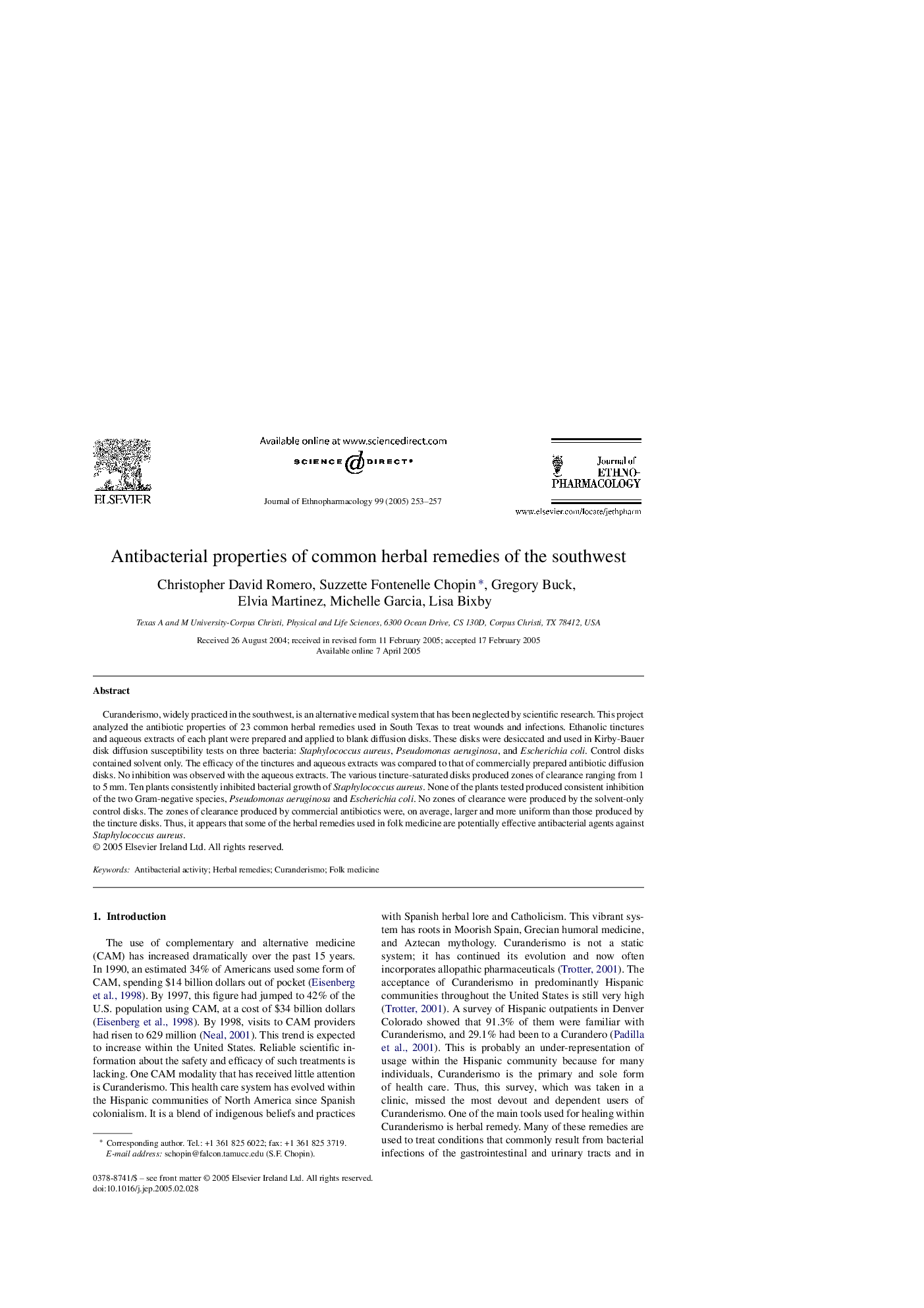| Article ID | Journal | Published Year | Pages | File Type |
|---|---|---|---|---|
| 9009750 | Journal of Ethnopharmacology | 2005 | 5 Pages |
Abstract
Curanderismo, widely practiced in the southwest, is an alternative medical system that has been neglected by scientific research. This project analyzed the antibiotic properties of 23 common herbal remedies used in South Texas to treat wounds and infections. Ethanolic tinctures and aqueous extracts of each plant were prepared and applied to blank diffusion disks. These disks were desiccated and used in Kirby-Bauer disk diffusion susceptibility tests on three bacteria: Staphylococcus aureus, Pseudomonas aeruginosa, and Escherichia coli. Control disks contained solvent only. The efficacy of the tinctures and aqueous extracts was compared to that of commercially prepared antibiotic diffusion disks. No inhibition was observed with the aqueous extracts. The various tincture-saturated disks produced zones of clearance ranging from 1 to 5Â mm. Ten plants consistently inhibited bacterial growth of Staphylococcus aureus. None of the plants tested produced consistent inhibition of the two Gram-negative species, Pseudomonas aeruginosa and Escherichia coli. No zones of clearance were produced by the solvent-only control disks. The zones of clearance produced by commercial antibiotics were, on average, larger and more uniform than those produced by the tincture disks. Thus, it appears that some of the herbal remedies used in folk medicine are potentially effective antibacterial agents against Staphylococcus aureus.
Related Topics
Health Sciences
Pharmacology, Toxicology and Pharmaceutical Science
Pharmacology
Authors
Christopher David Romero, Suzzette Fontenelle Chopin, Gregory Buck, Elvia Martinez, Michelle Garcia, Lisa Bixby,
